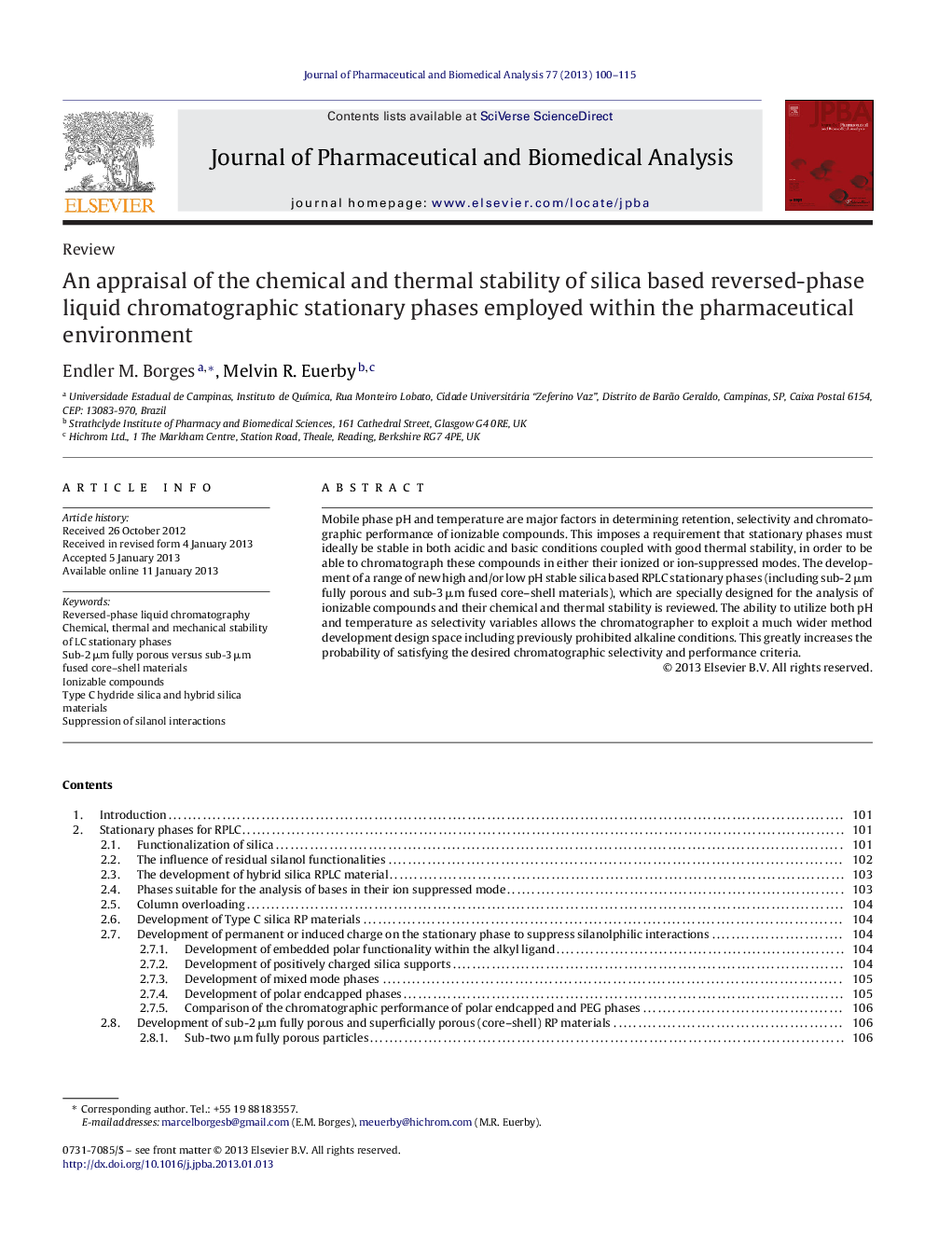| Article ID | Journal | Published Year | Pages | File Type |
|---|---|---|---|---|
| 1221958 | Journal of Pharmaceutical and Biomedical Analysis | 2013 | 16 Pages |
Mobile phase pH and temperature are major factors in determining retention, selectivity and chromatographic performance of ionizable compounds. This imposes a requirement that stationary phases must ideally be stable in both acidic and basic conditions coupled with good thermal stability, in order to be able to chromatograph these compounds in either their ionized or ion-suppressed modes. The development of a range of new high and/or low pH stable silica based RPLC stationary phases (including sub-2 μm fully porous and sub-3 μm fused core–shell materials), which are specially designed for the analysis of ionizable compounds and their chemical and thermal stability is reviewed. The ability to utilize both pH and temperature as selectivity variables allows the chromatographer to exploit a much wider method development design space including previously prohibited alkaline conditions. This greatly increases the probability of satisfying the desired chromatographic selectivity and performance criteria.
Graphical abstractFigure optionsDownload full-size imageDownload as PowerPoint slideHighlights► The development of RPLC columns for the analysis of ionizable analytes is discussed. ► The thermal, chemical and mechanical stability of RPLC stationary phases are discussed. ► The development of RPLC fused core–shell technology is discussed. ► The development of RPLC sub-2 μm phases is discussed. ► Effect of RPLC operating parameters on peak shape of bases.
